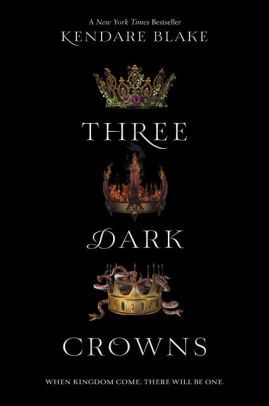
Why The Medieval Girl in the Tower Trope Still Exists in YA Lit
The girl in the tower trope; Young Adult books love it but the Breton lay (Medieval French poem) began the whole affair. That is, women escaping their towers quite easily once they discover their agency. Books where girls trapped in supernatural mental health institutions or royal kingdoms ultimately break free. Medieval mythological concepts have built the YA genre. It is no wonder that the Medieval girl stuck in a tower trope continues to appear in YA. Readers imagine a way out of and beyond hopeless circumstances; especially a female audience who traditionally experience the threat of authority figures. Those who aim to stigmatize, silence, and ultimately sequester female power.
Content Warnings: Abuse, Self-harm, Suicide, and Explicit Depictions of Mental Illness
Let’s Get Medieval
I would like to turn your attention to the bloody, sexy, and comedic poems of Marie De France, specifically, Guigemar. Like all good stories, it begins with an old rich husband trapping his young wife in a tower. In lais, when an old lord is married to a young lady, it is fair to assume a young knight will become the lady’s lover. Let’s be honest, his wife’s beauty threatens the lord’s power. He is not desirable. Instead, the lord puts our lady in a tower where he has complete control over her body and life.
Guigemar, our chevalier (knight on a horse), kills a white magic deer who doesn’t take kindly to dying. The deer injures and curses the knight with a deep thigh wound. It will only heal if he finds a lover who feels pain and suffering because of his love. The knight stumbles onto a magic ship outside the window of our lady’s tower. Our lady must now choose to leave her tower and accept a magical adventure laid out before her, or Guigemar will die on the ship. In this way, the knight becomes dependent on the lady’s reciprocated love to survive.
Turning To A Few Trapped Teens
In the early 2010s, popular YA novels stuck superpowered teens in psychiatric institutions left and right. The Summoning by Kelley Armstrong, Shatter Me by Taherah Mafi, Hourglass by Myra McEntire, The Unbecoming of Mara Dyer by Michelle Hodkin, and My Soul to Take by Rachel Vincent all feature teens who escape psychiatric institutions once they discover supernatural powers. Authority figures gaslight teen girls into believing institutionalization benefits them and their powers are symptoms of mental illnesses. While some would argue this is more young women who are perceived as mentally ill on the attack than girl in the tower, the magical escape is emblematic of the later. The Breton lay relies on women accepting magic to secure liberation.
Please note, as there’s no DSM-5 entry for necromancers, superheroes, time travelers and banshees, I would not look at these novels for accurate portrayals of mental illnesses. Instead, they are rather fitting representations of women escaping unwarranted confinement. It is also fun to watch heroines (sometimes literally) burn down the institutions that imprisoned them.
A Lady’s Choice Awaits
Luckily, our lady in her tower and Guigemar will also be given the opportunity to revolt. Our lady wakes up, sees the knight on the ship, and races down to care for him. (Or bury him if he is dead.) She finds Guigemar alive and super hot, so she takes a risk and cares for his upper thigh wound. As an aside, some medievalists note this is a stand in for another kind of male ache. She overcomes the lord’s restrictions by successfully providing medical and romantic care from the comfort of her tower. They even do a fun couple’s DIY, making chastity belts that can only be untied by each other in case they are separated. (Strange, but whatever works I guess.)
When her husband catches them, he promptly evicts Guigemar from his lady’s bed. At this point, she loses all hope. Without Guigemar, the lady essentially gives up and wants to die for the next two years. Tragically, she decides to kill herself, but as she reaches to open the door…She finds it was unlocked the entire time and a magical ship has always been waiting for her to lead her back to Guigemar. In a Cinderella’s-slipper-type moment, she bends down, unties his chastity belt and they rejoice. Her knight attacks her old husband’s castle to really seal the deal. Guigemar straight up slaughters the entire town to win and declares victory. Ultimately, when the old lord traps our girl in the tower, she discovers her magic and thrives in the outside world on her own terms.
Teen Girl In The Tower With Power
Modern YA has seen an increase in princesses or poor orphans using magic to escape and become politically powerful. Marissa Meyer’s Cinder, Kendare Blake’s Three Dark Crowns, Alwyn Hamilton’s Rebel of the Sands, Laurie Forest’s The Black Witch, Tomi Adeyemi’s Children of Blood and Bone, Renée Ahdieh’s The Wrath and the Dawn, Sarah J. Maas’s A Court of Mist and Fury, and Roshani Chokshi‘s The Star-Touched Queen all show confined women discovering agency (or magic), freeing themselves (and others), and changing the world in the process. Although magical guides often introduce heroines to magic, no one hands them freedom. Whether protagonists are trapped in dungeons, marriage, locked rooms, abusive homes, there is no easy way out of their various towers. Instead, the girl in the tower wields the power to break free. The royal potential exists in the girl in the tower. And once these women become ruling members of society, they destroy the institutions previously confining them.
Liberating Ladies
Wrapping things up, the Medieval girl in the tower trope persists in modern YA to tackle both female confinement and liberation. Much like the lady in a tower, caregivers lock away girls whose physical or psychological powers are threatening. YA Literature understands that girls leaving the tower draws a roadmap for women escaping captivity modern world. I for one, am a fan of the girl in the tower trope. YA authors continue to publish works where even when women are trapped and feel despair, they can get back up, escape, and demolish the people who dared confine them in the first place.























